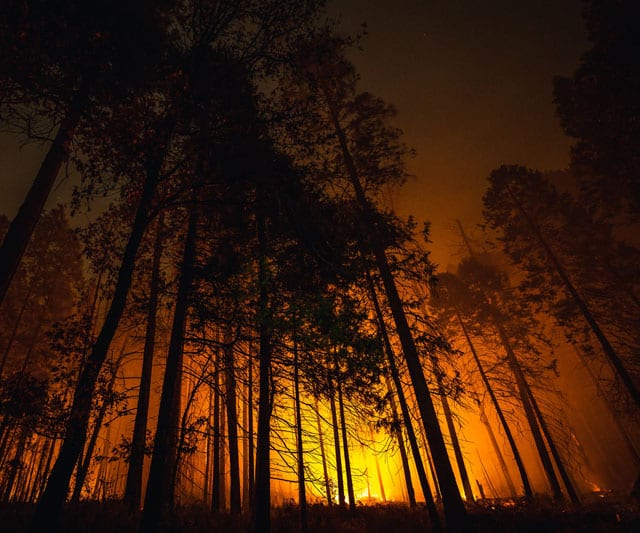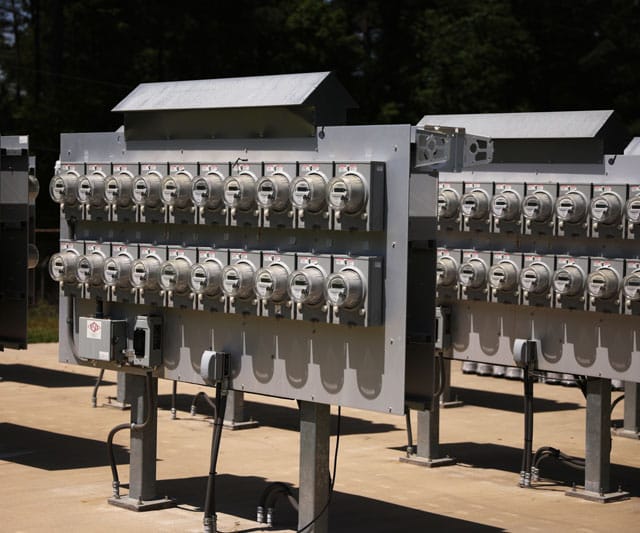Portland, Oregon, put its collective heads together when a heat dome started wildfires and buckled roads in June 2021.
Hundreds of people died in homes there that never had needed air conditioning before as the mercury climbed to 108, 112 and 116 degrees on three consecutive days.
Human-induced climate change made that now roughly 1 in 1,000-year weather event 150 times more likely, according to the nonprofit World Weather Attribution.
Agencies and charities throughout Portland’s Multnomah County area quickly organized a cooperative to get air conditioners into homes to save lives — and then more lives the next summer, when the dome returned millennia early.
It was just one of the climate-crisis plans that make Portland “the poster child for lots of good things,” says Danielle Arigoni, a managing director at the National Housing Trust, speaking at a recent America Walks webinar.
“They utilized the infrastructure that they had crafted during Covid, frankly, so they could use community-based organizations to get supports and information to older adults,” Arigoni says.
The average age of people who died from that heat-wave was 67, Arigoni says.
Portland’s housing programs are designed with older adults at the center using a network of infrastructure to draft long-term preparation plans, she says.
“And guess what? The next summer was a repeat of that (heat dome) in many regards, but the death rate was far lower,” she says
Resiliency Matters
Communities should work now to build climate resiliency for older Americans, says Arigoni, author of “Climate Resilience for an Aging Nation.”
“This trendline, and the fact that it’s virtually unchanged over 20 years, makes it painfully clear that we are failing to create safeguards for our older adults in times of risk,” Arigoni says.
“It’s not like we haven’t been told this was happening,” she says of climate catastrophes. “News stories almost consistently report these tragedies, but we haven’t made it a priority to reverse this trend.”
Hurricanes Katrina and Ian, California’s Camp Fire and other headlines reporting nature’s rebellion have been killing older adults at double, triple and quadruple the rate of other deaths, she says.
Meanwhile, the population of people age 95 or older continues to rise — from about 425,000 in 2010 to 631,000 in 2020, according to the U.S. Census Bureau.
In 2020, 1 in 6 folks in the U.S. was 65 or older, compared with 1 in 20 people 100 years before. The Census predicts that ratio to grow to 1 in 5 people —20% of the nation— in six years.
As the last of the baby boomers now enter retirement, safer communities need to have smaller homes with better energy efficiency, more transportation choices, multiple lines of communications and proximity to gathering places for chance encounters that contribute to social infrastructure, Arigoni says.
Additional Reading: Factoring Climate Change Into Retirement Planning
Area agencies on aging are “the Swiss army knives of services,” she says. Yet, they’re too often left out of discussions as communities plan habitat for climate resilience.
“Are the housing units planned in our zoning laws the right kind of housing needed?” Arigoni asks.
“If they’re not, then that’s where you press to get local officials to do better and do differently,” Arigoni says. “It’s an opportunity to define who we are as a community.”
She recommends using climate data to analyze and map out where the older adults may live and what resources they are likely to have and to need in a crisis. The National Oceanic and Atmospheric Administration publishes climate risk maps at climate.gov that can help to project what risks may look like in 5, 10 or 20 years.
“There are more tools than ever before to help people and advocates identify their climate risks,” she says.
Medical and home-health aides need to watch for air quality, says Arigoni. A retiree may live in a home with black mold caused by chronic flooding that she can’t afford to remediate or leave because of her limited Social Security income, for example.
Climate catastrophes interrupt medical care, adding to the mortality rate, Arigoni says. Evacuation is psychologically harder for older people, who often face mobility, cognitive and resource challenges that make them more vulnerable.
She suggests joining book clubs, going to local talks or spending time at a park to get a conversation rolling with others who may share a concern about a community’s resilience.
It’s important to host a community conversation on how to square the community’s values, she says.
Rural vs. Urban Abilities
Advocates don’t have to be inside the power structure to join partnerships and networks that deliver solutions, says Arigoni.
The Volunteer Maine program, which coordinates networks of local helpers, is another one of the case studies in her book.
Almost 22% of Maine already is age 65 or older, according to the 2020 data, she says.
“That demographic change already has happened,” she says. “Solutions (that Volunteer Maine) put in place in some rural places can be instructive to the rest of us, even though the challenges may be a little different than in urban centers.”
Rural areas more often need to retrofit existing homes for better quality and accessibility, rather than build and move seniors to smaller homes, she says.
“How can housing be built and renovated so it remains safe for people to live in their homes longer?” Arigoni asks.
The pool of services that older adults need grows more diverse every year with their growing numbers, Arigoni says. Many want to interact with younger people rather than isolated with other senior citizens.
“Wherever one ages, they want to feel a sense of purpose and engaged,” Arigoni says. “If they want to remain in the place where they’ve been a long time, they should get to stay.”
Volunteer Maine’s volunteer driver program works well to help older homeowners stay put, she says.
Civic commitment and the spirit of volunteerism is strong where fewer people are strangers to each other, she added.
AmeriCorps VISTA (Volunteers in Service to America) alumni helped create Volunteer Maine. The federal government founded AmeriCorps in 1965 as a domestic version of the Peace Corps.
The Transportation Link
And it’s not just about housing. The key is for local transportation infrastructure to be designed to be resilient to the changing weather patterns that climate change is causing their communities, Arigoni says.
Portland designed its transportation choices with income inequality in mind, she says. The cost of buying, insuring and maintaining a car is cost-prohibitive for many people, particularly seniors who don’t need to drive daily and may feel less comfortable behind a wheel.
But a grandmother may no longer be able to stand in the heat while waiting for a bus, says Arigoni.
“We have to have more equitable distribution of transportation, and that means more choice,” she says. Changing a community’s expectations “can be done while hitting both marks,” she says.
“It starts with education,” Arigoni says. “It starts with having these conversations (about resiliency) at the community level.
“All sectors and all disciples have a role to play,” Arigoni says. Planning for climate risks “is no longer just a job for one sector. It’s a job for all of us.”
Linda Hildebrand is a longtime newspaper editor and consumer reporter.







